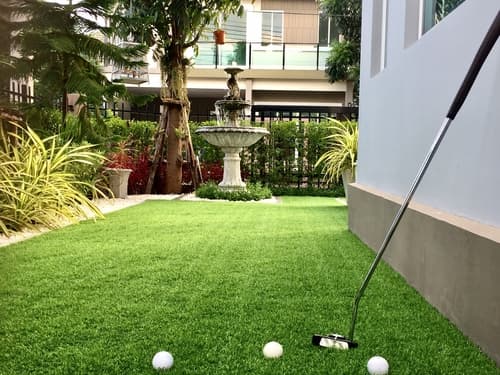What Are Pondless Waterfalls and How Do You Build One?
September 14
A pondless waterfall is a recirculating stream or waterfall without the presence of a pond. These waterfalls function by pumping water contained inside an in-ground reservoir through the waterfall spillway, which in turn enables the water to make its way back down into the reservoir.
A quality pondless waterfall in your yard is easy to maintain, looks gorgeous, and gives your pets and children endless opportunities to play in the water. When combined with some first-rate artificial grass, a pondless waterfall can turn your garden into something truly unique.
So how do you get one of these waterfalls? Do you need to hire a professional waterfall contractor in San Diego, or can you build and maintain a waterfall on your own? We’ll be answering these questions in the following article. Read on.
 Are you looking to add a world-class pondless waterfall to your company’s premises? Or perhaps you’re planning to install a patio at your house in Torrey Pines? Whatever your landscaping needs may be, you’ve come to the right place.
As the leading landscaping contractor in San Diego, Pacific Dreamscapes is fully equipped to provide you with an extensive range of landscaping services. Get in touch with us today.
Are you looking to add a world-class pondless waterfall to your company’s premises? Or perhaps you’re planning to install a patio at your house in Torrey Pines? Whatever your landscaping needs may be, you’ve come to the right place.
As the leading landscaping contractor in San Diego, Pacific Dreamscapes is fully equipped to provide you with an extensive range of landscaping services. Get in touch with us today.
How do you build a pondless waterfall?
First off, let’s get one thing straight: unless you have specialized equipment and a background in landscaping, you’re much better off leaving your pondless waterfall installation to the experts. The process is simply too complex to be reliably done by a layperson. At best, attempting to go it yourself without prior experience will result in a faulty pondless waterfall, or one that doesn’t look as good as you hoped. If you’re unlucky, you may end up damaging expensive equipment, ruining your yard, and failing to make a working waterfall. Think we’re exaggerating? Check out this pondless waterfall-building guide:Step #1: How big is it going to be?
Start by deciding the size of your waterfall. This will also determine the size of your reservoir and whether you want light (100gph per inch of spillway), average (150 gph), or high water flow (200 gph). Your reservoir should be 2-3 the volume of the total water in the pondless waterfall.Step #2: Start digging
Dig the hole for the reservoir. The deepest point should be where the pump vault and the pump are located.Step #3: Add the liner
Line the reservoir and the stream with a single piece of underlay, then add EPDM liner. The liner should overlap the edges to prevent leaks and shifting over time and to ensure the edges are above the water line.Step #4: Place the waterfall starter
The spillway should be located at the top of the stream. The liner should either attach to the front plate of the waterfall spillway or go behind it.Step #5: Install the remaining components
Put the pump vault and the water retention cubes inside the reservoir. The pump is best placed within the vault. Use a PVC Flex pipe to connect the pump and the spillway, and add a check-valve close to the pump to keep the water from draining out of the pipe and back into the reservoir.Step #6: Make your waterfall
Get your rocks and arrange them around the stream and the spillway. It’s best to start with the biggest stones. Make sure to avoid folding down the liner, as this may result in a leak. Use pond foam to fill in the gaps between larger rocks.Step #7: Final touch-ups
Use decorative stones to cover the pump vault and the water retention cubes. Refrain from putting any large stones over the pump vault lid (you want to keep it accessible).Where can I find a dependable waterfall contractor in San Diego?
 Are you looking to add a world-class pondless waterfall to your company’s premises? Or perhaps you’re planning to install a patio at your house in Torrey Pines? Whatever your landscaping needs may be, you’ve come to the right place.
As the leading landscaping contractor in San Diego, Pacific Dreamscapes is fully equipped to provide you with an extensive range of landscaping services. Get in touch with us today.
Are you looking to add a world-class pondless waterfall to your company’s premises? Or perhaps you’re planning to install a patio at your house in Torrey Pines? Whatever your landscaping needs may be, you’ve come to the right place.
As the leading landscaping contractor in San Diego, Pacific Dreamscapes is fully equipped to provide you with an extensive range of landscaping services. Get in touch with us today.
